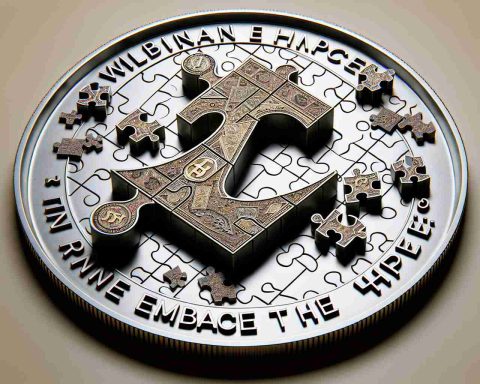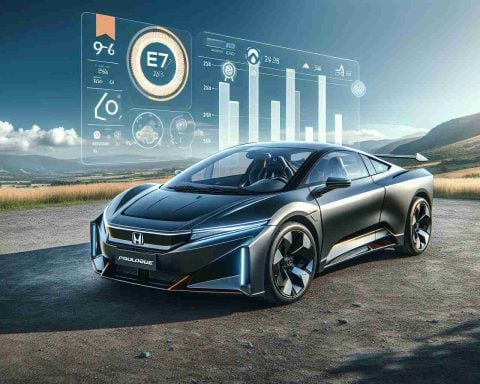- Porsche plans to cut 1,900 jobs by 2029 in response to waning demand for electric vehicles.
- The Taycan, Porsche’s all-electric model, saw a 49% sales decline in 2024, prompting workforce adjustments.
- Geopolitical tensions and sluggish EV sales challenge Porsche’s economic stability.
- Porsche invested €800 million in expanding gas and hybrid vehicle offerings, indicating a strategic shift.
- Profit margins are expected to remain between 10%-12%, below the long-term target of 20%.
- Workforce reductions will focus on voluntary departures and early retirements, avoiding layoffs until 2030.
- The automotive industry faces a transitional period, requiring agility to blend traditional and innovative vehicle models.
Beneath the sleek facade of its Stuttgart-Zuffenhausen headquarters, Porsche grapples with the harsh realities of the electric vehicle market. With electric car enthusiasm waning, the legendary automaker plans to cut 1,900 positions by 2029, aiming to align its workforce with the plateauing demand for electric vehicles. The ax falls mainly on the plant that gave life to the Taycan, their all-electric marvel.
The iconic brand has been navigating rough economic waters, citing both geopolitical tensions and sluggish EV sales as the stormy seas rocking their ship. Meanwhile, Porsche’s recent €800 million investment into broadening its gas and hybrid vehicles lineup signals a strategic pivot. This maneuver comes at a cost; profit margins are projected to hover around 10% to 12%, a stark contrast to Porsche’s ambitious 20% long-term goal.
The numbers echo the challenge. Taycan, once a beacon of pure electric innovation, saw its sales nosedive by 49% in 2024. To curb the fallout, Porsche already slashed a shift at the Zuffenhausen facility last autumn.
The scene isn’t isolated. Sister company Audi, nestled within the Volkswagen Group like Porsche, faces similar headwinds. Interestingly, while Audi’s executives hold tense discussions with labor unions over potential layoffs, Porsche seems to have forged a more diplomatic path. Per agreements, voluntary departures and early retirements will sculpt the necessary workforce adjustments, avoiding the compulsion of layoffs until 2030.
The broader narrative is clear: as the automotive industry confronts its transitional era, agility and adaptation become paramount. For Porsche, the road ahead involves steering through consumer preferences with a blend of tradition and innovation—combustion engines coexisting with electric aspirations.
Will Porsche’s Bold Moves in a Shaky EV Market Pay Off?
How-To Steps & Life Hacks: Navigating the EV Market Decline
1. Diversify Offerings: As Porsche and many automakers are discovering, diversifying product offerings by integrating both electric and hybrid models can mitigate risks associated with shifting consumer preferences.
2. Leverage Brand Heritage: Porsche’s rich history and brand power can be leveraged to maintain consumer interest through marketing campaigns highlighting their engineering prowess and luxury experience.
3. Strengthen Customer Relationships: Direct engagement with consumers, understanding their motivations, and offering tailored experiences can foster brand loyalty even amidst market uncertainty.
Real-World Use Cases: Who Is Buying Porsche’s Electric Vehicles?
– Urban Dwellers: Consumers in urban areas with access to charging infrastructure remain primary buyers due to the convenience and lower environmental impact of electric vehicles (EVs).
– Environment-Conscious Buyers: A significant portion of Porsche’s EV market consists of buyers who prioritize sustainability and low emissions over performance alone.
Market Forecasts & Industry Trends: Future Trajectory of Porsche and EV Market
– Predictions suggest a steady increase in hybrid vehicle demand, implying Porsche’s €800 million investment could yield significant returns as hybrid models become more popular among traditional car enthusiasts.
– According to a report by Allied Market Research, the global electric vehicle market is projected to reach $802.81 billion by 2027, growing at a compound annual growth rate (CAGR) of 22.6% from 2020 to 2027. However, luxury EV segments like Porsche’s may face slower growth than mass-market brands.
Reviews & Comparisons: How Does the Taycan Stand Against Competitors?
– Performance: The Taycan’s performance is often praised, matching or surpassing that of competitors like the Tesla Model S in terms of handling and driver experience.
– Price Range: Positioned in the luxury segment, the Taycan’s pricing is generally higher than others like Tesla, which may deter some potential buyers.
Controversies & Limitations: Challenges Porsche Faces
– Some critiques focus on Porsche’s high price points and limited range of the Taycan, which could impact sales compared to more affordable EV options.
– The dependency on luxury branding during a period when cost-effective sustainability becomes crucial might limit Porsche’s outreach.
Features, Specs & Pricing: Key Highlights of Taycan
– Performance Specs: Featuring dual-motor systems, the Taycan offers impressive acceleration, typically reaching 0-60 mph in under 3 seconds for higher-end models.
– Price: The basic Porsche Taycan starts around $82,700, with performance-oriented trims exceeding $150,000.
Security & Sustainability: How Porsche Tackles These Issues
– Security: Porsche consistently integrates advanced driver-assistance systems (ADAS) to ensure safety in its EV lineup.
– Sustainability: Porsche is shifting towards eco-friendly manufacturing processes, opting for more sustainable materials and energy sources.
Insights & Predictions: Porsche’s Strategic Evolution
– Hybrid Focus: As consumer enthusiasm for purely electric models like Taycan fluctuates, Porsche’s strategic focus on hybrids positions it well for market resurgence.
– Consumer Tailoring: Responding hypothetically to consumer desires—with continued focus on high performance alongside innovation—suggests potential growth in hybrid and electric sectors over coming years.
Tutorials & Compatibility: Getting the Most Out of Your Porsche EV
– Charge Management: To optimize battery life, users should utilize both home charging solutions and public fast charging networks available globally.
– Software Updates: Regular updates via Porsche Connect ensure that the Taycan receives enhancements and features maintaining performance and safety.
Pros & Cons Overview: Evaluating Porsche’s Strategy
– Pros: Established luxury brand with a strong heritage; impressive performance and technology in their vehicles; strategic shift to hybrids.
– Cons: High prices relative to competitors; market challenges in EV adaptations; heavy reliance on brand identity may not suffice alone amidst growing competition.
Actionable Recommendations and Quick Tips
– For prospective buyers: Consider hybrids as an entry point into the Porsche brand, offering a blend of performance and fuel efficiency.
– For car enthusiasts: Stay updated with Porsche’s incentives and new model launches that could yield excellent value or innovative technology.
– For investors: Monitor Porsche’s strategic pivots, especially in hybrid developments and broader EV adoption linked to market trends.
For further information on Porsche’s offerings and company news, you can visit their official website at Porsche.


















